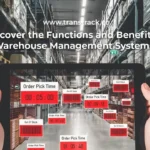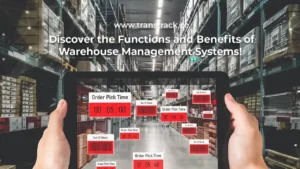Monitoring Fuel Expenditure Using Fuel Sensor
Posted on January 2, 2024 by Nur Wachda Mihmidati

Fuel Sensor is one of the main features in the Fleet Management System. Then, what is the Fuel Sensor itself? This time we will learn about what the Fuel Sensor is along with its functions and how it works. You can read the following article from TransTRACK for more details!
Fuel Sensor, What is it?
Fuel Sensor, also known as a car fuel gauge, which will allow drivers to monitor fuel consumption and help them determine when to refill the tank. The Fuel Sensor itself consists of two main components: the sensing system itself (also known as the sender) and the indicator (also commonly referred to as the gauge).
The Fuel Sensor works by measuring the voltage across a variable resistor in the sensing system, to determine the amount of fuel in the vehicle, which is then passed on to the driver via the indicating system. Several components also work within the sensing system, allowing it to detect how much fuel is in the tank, including float switches, variable resistors, and wipers. The Fuel Sensor system is relatively simple compared to other sensors manufactured today, although newer Fuel Sensor systems can also use microprocessors for faster and more accurate measurements.
The Fuel Sensor is located in the fuel tank and consists of a float – usually made of foam and connected to a metal drive rod – mounted to a variable resistor. The variable resistor used in fuel level sensors often consists of a resistive material, where one end is fixed to the ground, with a wiper (like a windshield wiper on a very small car) and moves over the resistive material as the float moves.
As the float moves due to changes in fuel level, the wipers move by crossing the resistor, which causes a change in voltage. The orientation of the wipers means that the highest resistance is experienced by the resistor when the tank is empty. At this point, the wipers are also as far from the ground end of the resistor as possible. The change in current is then passed on to the indicator which in turn changes the reading.
Fuel Monitoring Function
Many vehicle telematics and stationary object monitoring systems provide fuel tank monitoring features. Often, fuel level measurement is one of the core fleet requirements for GPS vehicle tracking systems for trucks, construction and agricultural equipment. In addition, information on refueling volume and fuel drain volume from tanks or storage is useful for ship telematics systems and railway engines – machines with high fuel consumption. Increasingly, fuel level measurement and remote monitoring are being implemented for diesel generator sets, heating equipment rooms, and company gas stations.
Fuel tank monitoring allows the fleet manager or engine supervisor to:
1. Get Alerts on Fueling
Nowadays drivers can easily manipulate fuel bills. So, if you want to know what volume of fuel was refilled, at what time, where it was filled, then you can install this Level Fuel Sensor, which will reduce fuel wastage and abuse.
2. Real Time Fuel Level Monitoring
Fuel Sensor Monitoring will provide more accurate, reliable, and stable fuel levels even under extreme conditions. It can be used to measure real time fuel levels in vehicle fuel tanks and storage tanks.
3. Cost per Mile Tracking
The Fuel Monitoring System generates reports to calculate the distance traveled by the fleet and the amount of fuel consumed by them, which in return empowers the user to know the Cost per Mile and achieved mileage of the fleet and know its performance level.
4. Track and Stop Fuel Theft
The fuel monitoring report supports management to know where and when fuel theft occurs. Management can also have a fuel reconciliation report at the click of a button to find out fuel loss and fuel shortage, which is rather impossible in a manual tracking environment.
5. Identification of Inefficient Assets
With the help of the various types of reports generated by the Fuel Monitoring System, it is an advantage for decision-makers to actually identify which machines are not functioning properly/need maintenance/or should be scrapped/or declared junk. Decision makers can even schedule maintenance of machines based on the man-hour reports.
6. Error-Free Recording
In this digital age, why should such important records be kept in registers manually? This is where the Fuel Monitoring System comes in. Users can easily access, store records and data, and check reports on-the-go as well without errors on the online cloud platform.
7. Put Things Back in Your Control
Minimize processes and ensure accuracy and timeliness of records. Capture valuable data to assess and improve operations. Limiting fuel loss and identifying potential problems before they get out of hand. It all adds up to fuel savings, year after year.
How Fuel Sensors Work
If you are a Fleet Manager, there is no denying that fuel management is the most difficult task in monitoring overall fuel costs. Fuel monitoring is considered to be an important aspect of fleet management; which will help Fleet Managers in reducing heavy fuel usage in operations.
Your fuel-dependent fleet will require a monitoring system to track and evaluate fuel consumption and expenditure. Fuel management software is meant to measure and manage fuel consumption in various industries. This is where the Fuel Level Sensor comes in.
The fuel level sensor also found on TransTRACK can precisely measure the amount of fuel in the vehicle tank. This metric, when paired with GPS Monitoring and telematics platform functionality, results in exceptional fleet safety. On TransTRACK, the fuel stabilizer works with a fuel sensor measurement accuracy rate of up to 98%. This fuel sensor is used for analog methods that will stabilize the voltage of the fuel float thereby increasing the accuracy of fuel measurement.
As for Level Fuel Sensors, they are installed on the fuel tank of the vehicle/machine whose fuel consumption is to be monitored. They are placed such that the axis of their sensitive element is as close as possible to the geometric center of the tank. The sensors are then calibrated according to the tank size. Once the preparation is complete and connected to the monitoring system, the transfer of information to the software/application platform can begin.
The platform will further analyze the received information and transmit information in a visual format to the user, informing him about changes in the fuel level in the tank that can be visualized from his laptop or mobile phone in a visual form. You should know that the fuel monitoring system works in an organized form without affecting the performance of the vehicle/engine.
As explained earlier, Fuel Sensor will result in a highly reliable safety experience for fleet owners. Therefore, you can also enjoy the benefits of this Fleet Management System through TransTRACK without worrying about your fuel wastage!
Recent Post
Topic :
 Bahasa Indonesia
Bahasa Indonesia









